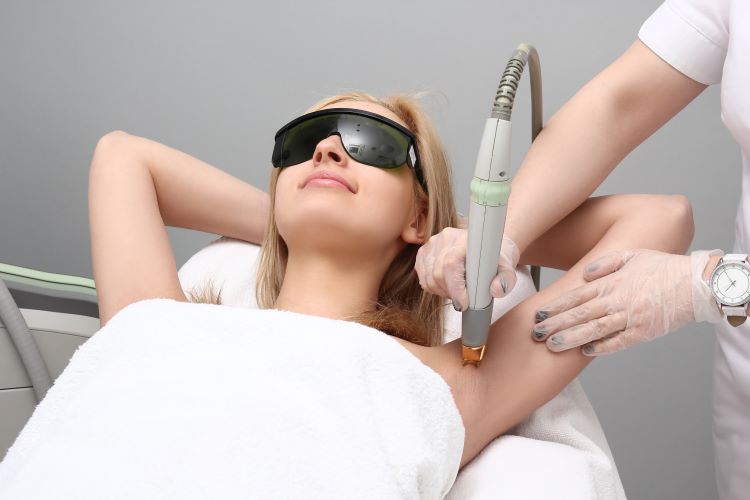Laser Skin Treatments and How Clinics in the US Are Using Them
Laser skin treatments are widely used in the US to address common skin concerns such as pigmentation, scarring, and signs of aging. Understanding how these treatments work and what clinics typically offer can help individuals make informed decisions about their skincare.

How do laser skin treatments work?
Laser skin treatments work by delivering concentrated beams of light into specific layers of the skin. This light energy is absorbed by the targeted tissue, causing controlled damage that stimulates the body’s natural healing process. As a result, the skin produces new collagen and elastin, leading to improved texture, tone, and overall appearance. Different types of lasers can be used to target various skin concerns, from surface-level issues to deeper dermal layers.
What types of laser treatments are available in US clinics?
US clinics offer a diverse array of laser treatments to cater to different skin types and concerns. Some of the most common types include:
-
Ablative lasers: These remove the outer layer of skin and are effective for deep wrinkles and severe scarring.
-
Non-ablative lasers: These stimulate collagen production without damaging the skin’s surface, ideal for mild to moderate skin concerns.
-
Fractional lasers: These treat small areas of skin at a time, allowing for faster healing and reduced downtime.
-
IPL (Intense Pulsed Light): While not technically a laser, IPL treatments use light energy to address pigmentation issues and redness.
What skin conditions can laser treatments address?
Laser skin treatments are versatile and can address a wide range of skin conditions. Some of the most common issues treated with lasers include:
-
Fine lines and wrinkles
-
Acne scars and other types of scarring
-
Uneven skin tone and pigmentation
-
Sun damage and age spots
-
Enlarged pores
-
Rosacea and facial redness
-
Unwanted hair
-
Tattoo removal
The specific laser treatment used will depend on the patient’s individual skin concerns and goals.
What should patients expect during a laser treatment session?
A typical laser treatment session begins with a consultation to assess the patient’s skin and discuss their goals. Before the procedure, the treatment area is cleaned, and a topical numbing cream may be applied for comfort. Protective eyewear is provided to shield the eyes from the laser light.
During the treatment, patients may experience sensations ranging from mild warmth to a snapping feeling, depending on the type of laser used. Sessions can last anywhere from 15 minutes to over an hour, depending on the size of the treatment area and the specific procedure.
What unique considerations exist for laser treatments in the US?
In the United States, laser skin treatments are subject to FDA regulations, ensuring a certain level of safety and efficacy. US clinics often have access to the latest laser technologies, allowing for more targeted and effective treatments. Additionally, many clinics offer combination therapies, where laser treatments are paired with other cosmetic procedures for enhanced results.
It’s important to note that while laser treatments are widely available, the regulations surrounding who can perform these procedures vary by state. Patients should always seek treatment from licensed professionals with specific training in laser therapy.
What should patients consider before starting laser skin treatments?
Before undergoing laser skin treatments, patients should consider several factors:
-
Skin type and tone: Some lasers may not be suitable for certain skin types or may carry a higher risk of side effects.
-
Medical history: Certain medical conditions or medications may affect eligibility for laser treatments.
-
Treatment goals: Realistic expectations should be discussed with the practitioner.
-
Downtime: Some laser treatments require several days of recovery time.
-
Cost: Laser treatments are often not covered by insurance and can be expensive.
-
Maintenance: Multiple sessions may be required for optimal results.
| Treatment Type | Average Cost Range | Number of Sessions Typically Needed |
|---|---|---|
| Ablative Laser | $1,500 - $6,000 | 1-2 |
| Non-ablative Laser | $600 - $1,800 | 3-5 |
| Fractional Laser | $800 - $2,500 | 3-5 |
| IPL | $300 - $800 | 3-6 |
Prices, rates, or cost estimates mentioned in this article are based on the latest available information but may change over time. Independent research is advised before making financial decisions.
In conclusion, laser skin treatments offer a powerful solution for various skin concerns, with US clinics at the forefront of implementing these advanced technologies. From addressing fine lines and wrinkles to tackling stubborn pigmentation issues, lasers provide a non-surgical option for skin rejuvenation. As with any medical procedure, it’s crucial for patients to thoroughly research and consult with qualified professionals to determine the most appropriate treatment plan for their individual needs.
This article is for informational purposes only and should not be considered medical advice. Please consult a qualified healthcare professional for personalized guidance and treatment.




